Yes, You Can Use Brick in the Kitchen
http://decor-ideas.org 08/10/2014 20:23 Decor Ideas
Houzzers, I get the feeling from some Comments sections that many of you are afraid of using brick in the kitchen, and that’s a shame. Brick can lend a wonderful historic look, warm up a kitchen or make you feel like you’re in an urban loft. On the other hand, you fear you’ll wind up with a stack of greasy, hard-to-clean masonry stacked behind your stove. Or perhaps you suspect that a thin brick veneer will look oh so faux. There’s no need to fear. Here’s the lowdown on brick and brick veneer: whether or not to seal it, how to make a brick veneer look authentic and how to maintain and clean it — it’s much easier than you think.
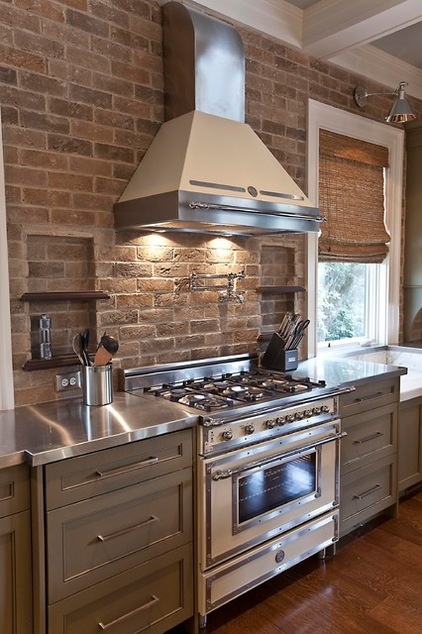
The easiest way to get the look of real brick without having to accommodate its weight is to use a brick veneer, which is typically ¾ inch thick. The veneer on this backsplash is Thin Brick by Boral Stone in Tuscan Blend. It is a concrete-based product.
“Sealants are not necessary on these products,” says Kris Knannlein of Boral Stone Answers. “However, if you choose to seal it, it must be a silane-based breathable sealer.” She warns that using a sealer may darken the color, slow the natural movement of moisture out of the brick and/or increase the possibility of efflorescence.
Anatomy of a Brick Veneer Wall
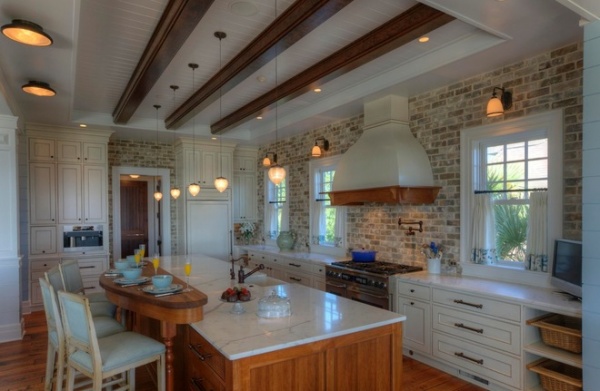
You’re probably wondering what to do when spaghetti sauce splatters on unsealed brick veneer. Cleaning is easy, but there are some strict guidelines to follow. “It’s very important not to use an acid-based cleaner, any sort of power washing, sandblasting or a wire brush,” Knannlein says. This is because these items can potentially remove the base color on the veneer. “We recommend using a granulated soap like laundry detergent mixed with water and scrubbing with a stiff-bristled brush,” she says. “We also recommend using one part vinegar to five parts water.”
The bottom line is to check the product manufacturer’s installation and cleaning guides. Most of them have this information posted on their websites, or it’s available via their customer service departments.
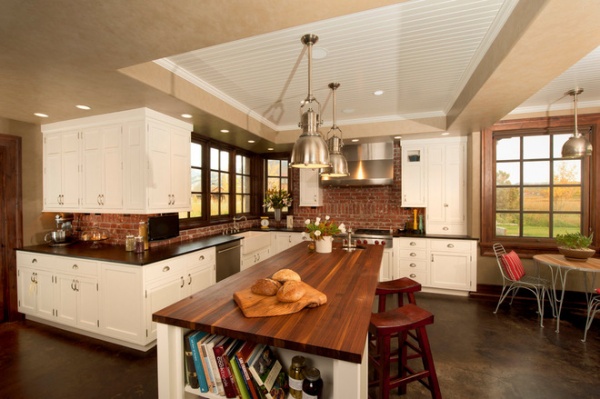
Architect Greg Dennee of Locati Architects opted for a brick veneer in his own Montana kitchen. “It can be applied similarly to a tile, not requiring any additional structural support,” he says. “Mine was grouted by an accomplished mason, giving it an authentic feel.”
Dennee opted not to seal his veneer. “Honestly, it is really simple to clean, and we have never had an issue with it, even at the back of the cooktop,” he says. “That said, we have sealed some bricks and stones with transparent, no-sheen masonry sealers for our clients with good success.”
Note the vertical row of bricks Dennee added across the backsplash. This is called a soldier course and is typically seen at the base or top of a brick wall, often on exteriors. “I thought it would be fun and unexpected to use it to set off the range and hood from the rest of the backsplash areas,” he says.
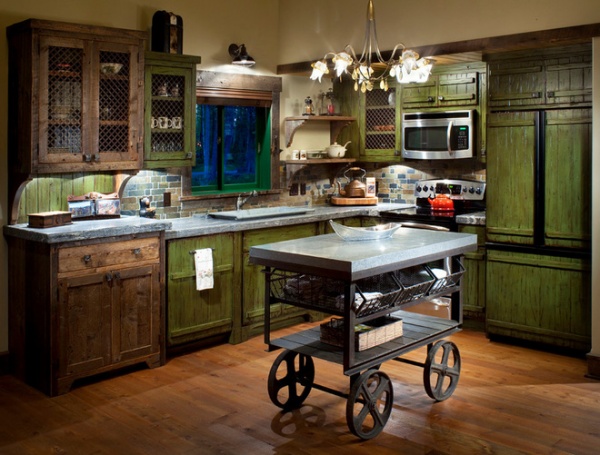
Dennee has discovered some installation tricks for making veneer look like real brick. “In terms of pulling off this look, I think the biggest thing is to use the brick from inside corner to inside corner and from the countertop all the way to the bottom of the cabinet or ceiling,” he says. “To truly suggest a convincing brick wall upon which the cabinets were hung, you need to eliminate revealing that the material is a veneer — ending the brick on an inside corner, and never and outside corner, is part of this.”
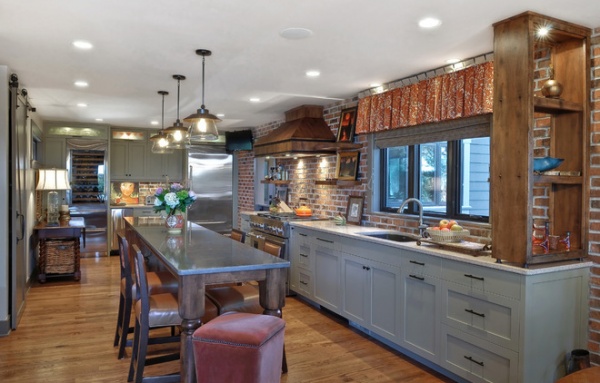
In interior designer Shannon Bogan’s Lowcountry kitchen, the backsplash is also a thin brick veneer. “This gives the kitchen the feeling of one of the more industrial warehouse buildings you see in downtown Charleston,” describes Robert Paige of K & K Custom Cabinets.
The lines of grout are relatively wide, and Bogan maintains it by having it sealed annually.
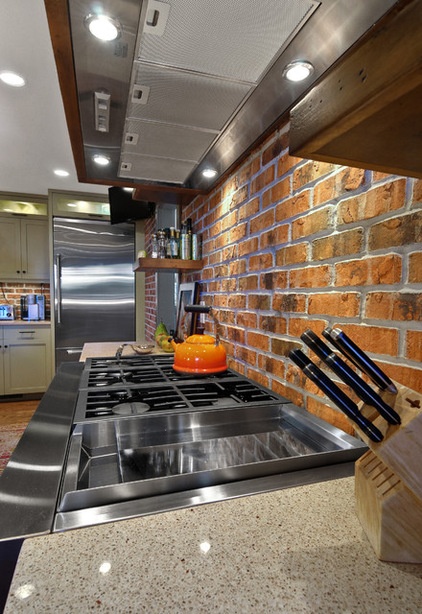
“Removing the outlets from the brick backsplash will most certainly improve the overall look and help convey a more convincing look,” Dennee says. He recommends moving the backsplash electrical outlets up high, set horizontally, or using Plugmold-style strip outlets if possible. (Be sure to comply with safety codes and use a professional electrician.)
In the Lowcountry kitchen, there are no outlets mucking up the brick pattern or giving away that it’s a veneer. “The outlets are concealed in a cavity underneath the cabinets along with the undercabinet lighting, using either Plugmold strips or shallow junction boxes,” Paige says.
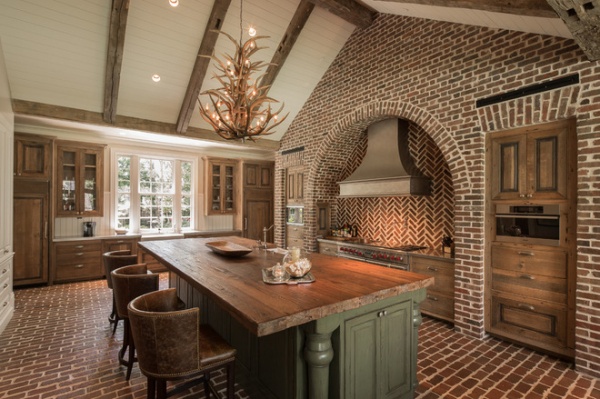
In Texas brick homes are common, because the material is readily available locally and can stand up to the harsh climate. The material is often carried in from the outside, which creates connections between the exterior and interior architecture. It’s not uncommon to see whole bricks used in Texas interiors, like in this Houston home.
“The reclaimed brick was used to age the kitchen while adding warmth and texture,” says Brian Thompson, president of Thompson Custom Homes. The intricate brickwork is full of special details that are seen elsewhere on the house — an arched alcove houses the range and vent hood, for instance. The cabinets have an interior-door-like presence, thanks to their scale and the angled-soldier-course detailing overhead. The room also has a brick floor, which has a waxed finish for easier cleanup.
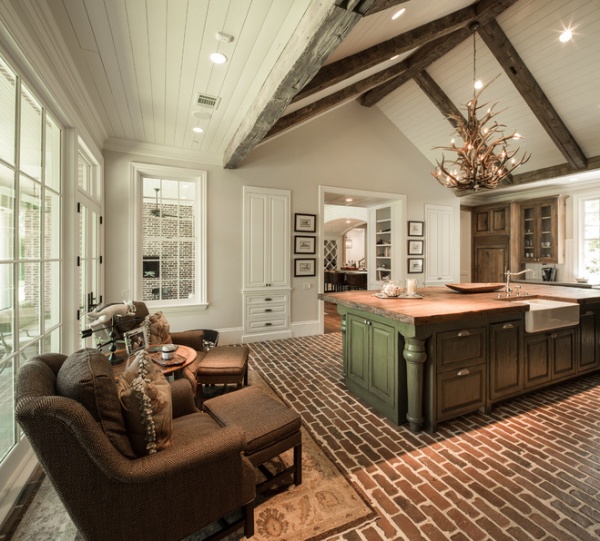
The key to using brick in the kitchen is balance. “It can be a great texture, and if you are worried about it being too heavy, you can paint to reduce overall weight and have nice texture,” Thompson says. In this kitchen the brick is used to pack the most punch — on the floor and on the range wall. Reclaimed barn beams and planks on the ceiling also contribute to the aged look in this new home.
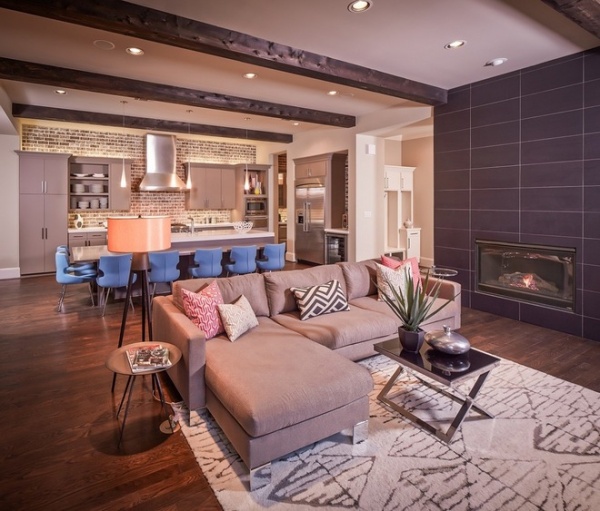
Brick kitchen walls are not limited to traditional and transitional looks. In this contemporary home, also in Houston, a brick accent wall helps define the kitchen and dining room spaces in the open plan. While the palette of light neutral walls, exposed dark beams and brick walls is similar to that of the previous kitchen, the style is completely different.
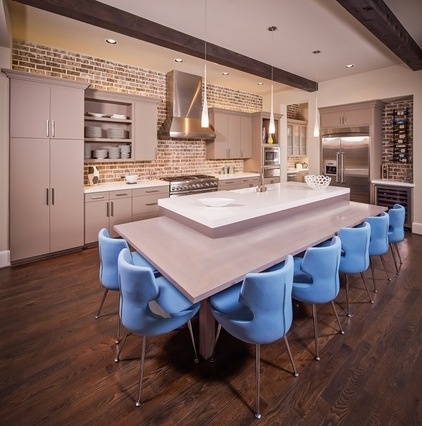
The paint colors on the cabinets and walls play off the colors seen in the brick and mortar. The brick is Mosstown by Cherokee, the cabinets are a soft gray, and the walls are cream. The beams are cedar with an ebony stain.
Behind the wine rack, more brick picks up on the long accent wall.
Cabinet paint: Eiffel Tower 521-5, Pittsburgh Paints; wall paint: Moth Gray 515-4, Porter Paints
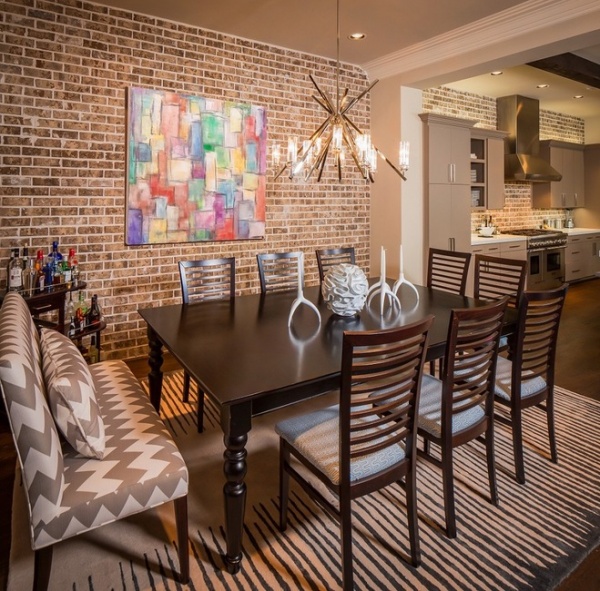
While the brick was used to tie the interior to the exterior, it also gives the adjacent dining area’s design an urban loft look.
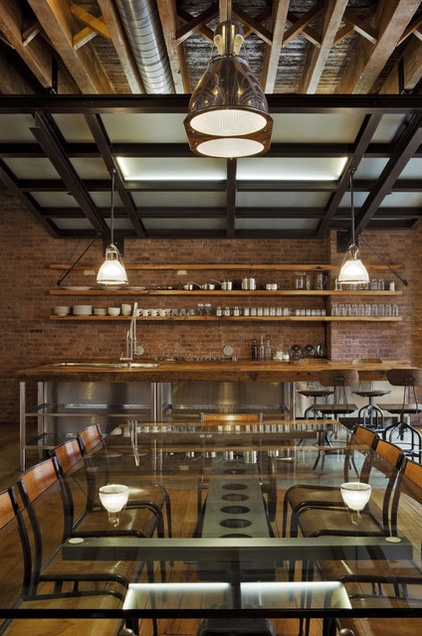
Speaking of lofts, New York City architect Jane Kim is no stranger to working with exposed antique brick. In this loft, in Manhattan’s Tribeca neighborhood, she embraced the former warehouse’s industrial past, accentuating the brick with reclaimed wood and steel. Long, open shelves underscore the brick pattern and break up the large expanse.
As for old brick in the kitchen, Kim recommends sealing it. “We usually seal it with a matte brick sealer to keep the dust from getting all over the kitchen,” she says.
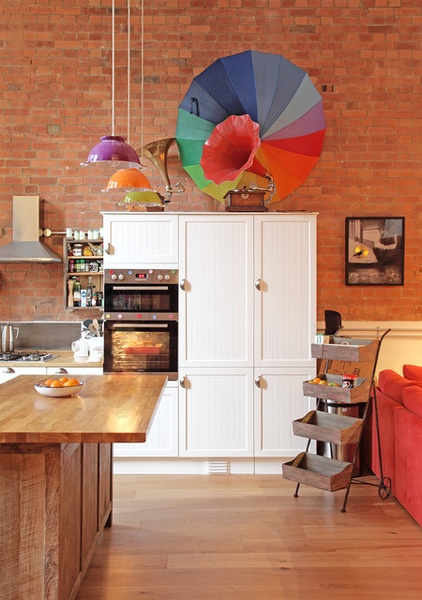
This kitchen, in a former Victorian school in London, shows how well bright colors can work with exposed brick in the kitchen. It is also very functional for the foodies who live here.
“We coated the brick with a clear satin varnish to project it and avoid bits of brick flaking off,” says Evros Agathou, creative director of Avocado Sweets Interior Design Studio.
The clients were nervous about food stains on the brick, so the designers added a stainless steel sheet as a backsplash behind the range to put them at ease. “Bricks are exposed to far harsher conditions than food spills and stand up very well,” Agathou says. “I think that if the brick has a protective coating on it, such as a varnish, it shouldn’t stain, but I haven’t tried it … yet!”
See the rest of this loft
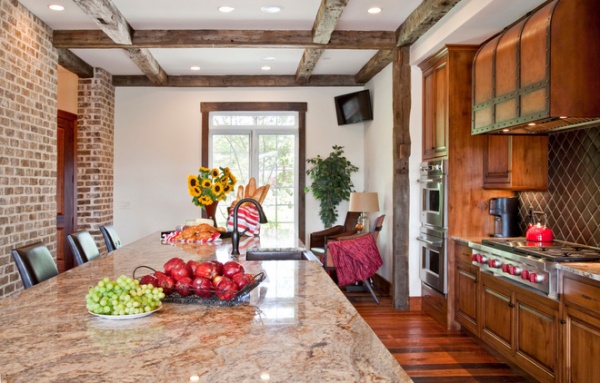
Even if you’re not convinced about being able to clean brick or brick veneer behind a range, you can still get the look in your kitchen. You can use brick on another wall that doesn’t have the range on it and call it a day.
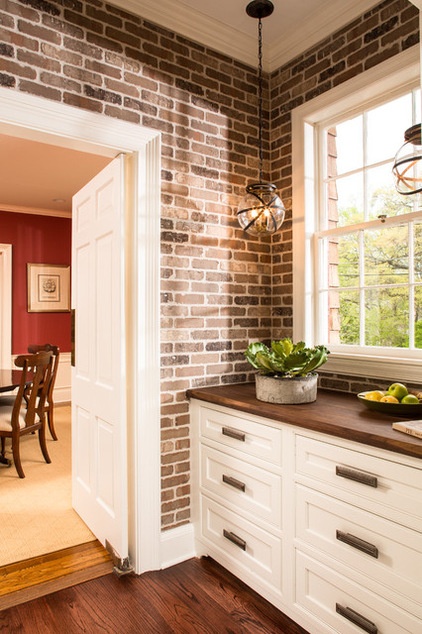
Another option is to use the brick in an adjacent space, such as a wine room or butler’s pantry. While the kitchen (next photo) has smoother finishes throughout, the view through to the rustic brick in the pantry lends a historic feel.
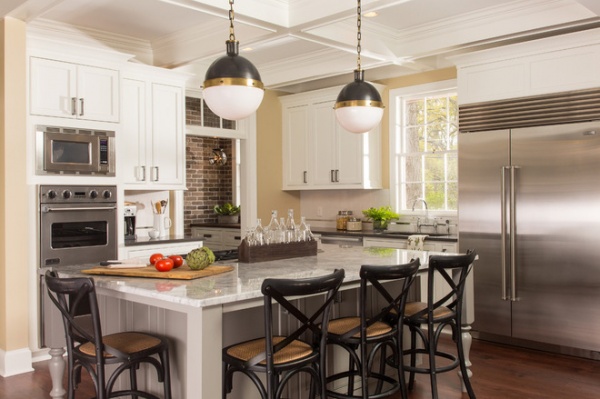
More: Explore other ways to use brick inside and outside the house
Related Articles Recommended












